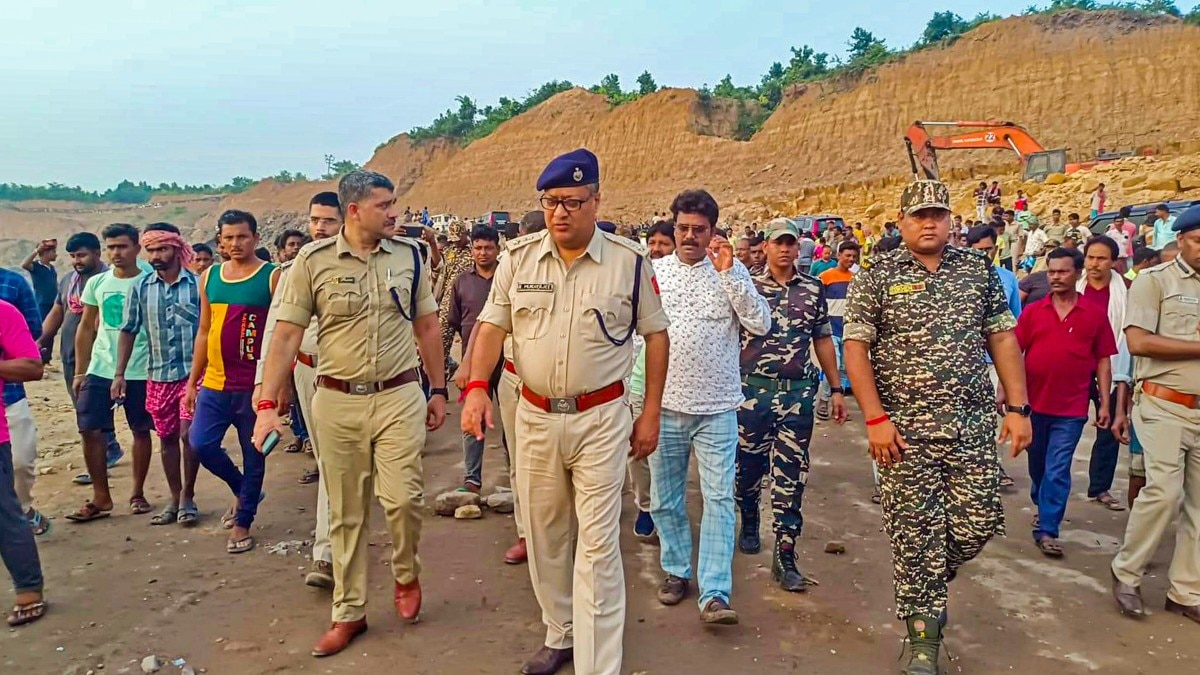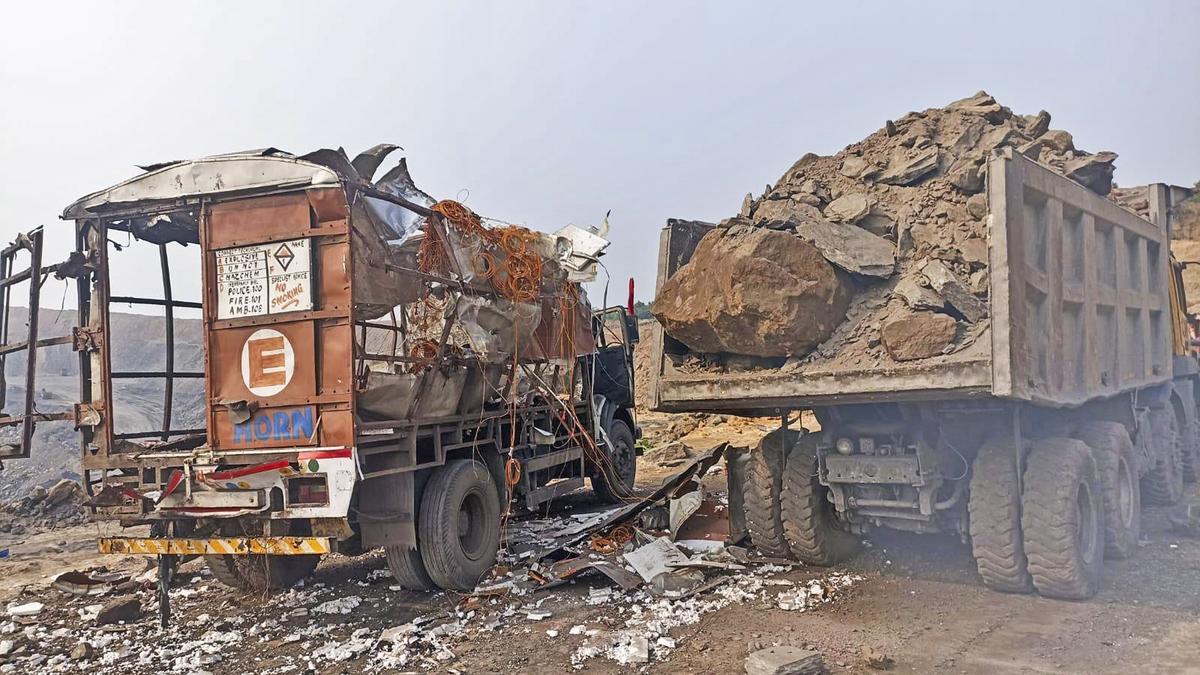
West Bengal Coal Mine Explosion: A Community in Mourning

At least seven individuals have tragically lost their lives, and several others have sustained injuries following a devastating explosion at a coal mine in the Birbhum district of West Bengal. The incident occurred on October 7, 2024, at the Gangaramchak Mining Private Limited colliery, located in the Khayrasole block. Reports indicate that the explosion took place around 10 AM while explosives were being unloaded from a truck during peak work hours.
Incident Overview
The explosion was triggered when a truck carrying explosives was parked in the area, and workers were in the process of unloading materials. Eyewitness accounts describe the blast as extremely powerful, with body parts reportedly scattered up to 500 meters away from the site. Local police and emergency services quickly responded, transporting the injured to a nearby state-run hospital in Suri, the district headquarters.
Casualties and Response
Initially, reports confirmed six fatalities, but this number later rose to seven, with ongoing investigations suggesting that more victims may be identified as recovery operations continue. Among the injured, three individuals were reported to be in serious condition. The local police have launched an investigation into the circumstances surrounding the explosion, focusing on whether proper safety protocols were followed during the handling of explosives.
Government Actions and Compensation
In response to this tragic event, West Bengal’s Chief Secretary, Manoj Kumar Pant, announced that families of the deceased would receive ₹30 lakh (approximately $36,000) as compensation. Additionally, one family member of each victim will be offered a job within government services. The state government will also provide an additional ₹2 lakh (about $2,400) to those injured in the blast.
Investigation and Safety Concerns
The West Bengal Power Development Corporation Limited (WBPDCL), which oversees operations at this mine, has confirmed that an investigation is underway to determine the cause of the explosion. It has been noted that explosives were transported in a single truck rather than the usual two trucks, raising questions about adherence to safety regulations. Local political leaders have called for thorough investigations to ascertain any negligence or misconduct that may have contributed to this disaster.

Community Reaction
The local community has expressed outrage and grief over the incident. Many residents gathered at the site, demanding accountability and assistance for the victims’ families. The situation remains tense as authorities work to manage public sentiment while conducting their investigation.
.This incident highlights ongoing concerns regarding safety practices in mining operations within India, particularly in regions where such accidents have previously occurred. As investigations continue, further details are expected to emerge regarding both the immediate causes of this tragedy and broader implications for mining safety standards in West Bengal and beyond..
What safety measures were in place at the coal mine

Regulatory Framework
- Compliance with Statutory Provisions:
- Operations are regulated under the Mines Act, 1952, the Mines Rules, 1955, and the Coal Mine Regulations, 2017. These laws mandate strict adherence to safety protocols to protect miners and surrounding communities
27
.
- Operations are regulated under the Mines Act, 1952, the Mines Rules, 1955, and the Coal Mine Regulations, 2017. These laws mandate strict adherence to safety protocols to protect miners and surrounding communities
- Site-Specific Risk Assessment:
- Mines are required to develop and implement Site-Specific Risk Assessment-based Safety Management Plans (SMPs) and Principal Hazards Management Plans (PHMPs) to identify and mitigate potential hazards
2
.
- Mines are required to develop and implement Site-Specific Risk Assessment-based Safety Management Plans (SMPs) and Principal Hazards Management Plans (PHMPs) to identify and mitigate potential hazards
Safety Measures
- Regular Safety Audits:
- Conducting multi-disciplinary safety audits to assess compliance with safety standards and rectify identified deficiencies
- Monitoring Systems:
- Installation of advanced monitoring systems for detecting hazardous gases (e.g., methane) using devices like Methanometers and multi-gas detectors
- Environmental Controls:
- Continuous monitoring of air quality through systems like Continuous Ambient Air Quality Monitoring Systems (CAAQMS) to manage dust and other airborne pollutants
- Emergency Preparedness:
- Implementation of emergency response plans, including first aid and rescue training, to prepare workers for potential accidents
- Use of Personal Protective Equipment (PPE):
- Mandatory use of PPE such as helmets, respirators, and protective clothing to safeguard against physical injuries and respiratory hazards
- Training Programs:
- Regular training sessions for workers on safety practices, including simulations for heavy equipment operation and emergency response drills
- Communication Systems:
- Establishment of communication protocols, including the use of informal channels like WhatsApp groups for disseminating safety information among workers
- Monitoring of Equipment and Machinery:
- Regular inspections and maintenance of mining equipment to ensure operational safety
- Explosive Handling Protocols:
- Strict guidelines for the transportation and handling of explosives, including designated unloading areas away from active work zones
- Community Safety Initiatives:
- Engagement with local communities to ensure their safety and awareness regarding mining operations, thereby fostering a culture of safety beyond the mine itself
These measures reflect a commitment to improving safety standards in coal mining operations, although incidents still occur, highlighting the need for continuous improvement in practices and regulations.

Conclusion
The tragic explosion at the coal mine in Birbhum district serves as a sobering reminder of the inherent risks associated with mining operations. Despite the implementation of various safety measures and regulatory frameworks designed to protect workers, incidents like this underscore the critical need for ongoing vigilance, adherence to safety protocols, and continuous improvement in risk management practices.As investigations unfold, it is essential for mining companies, regulatory bodies, and local communities to collaborate in identifying lapses and enhancing safety standards. The loss of lives is a stark call to action for all stakeholders involved to prioritize the well-being of workers and ensure that such tragedies do not recur.Ultimately, fostering a culture of safety, investing in training, and maintaining stringent oversight can help create a safer working environment for those whose livelihoods depend on coal mining. The commitment to safety must remain unwavering, not only to honor the lives lost but also to protect future generations of miners.
Discover more from
Subscribe to get the latest posts sent to your email.







